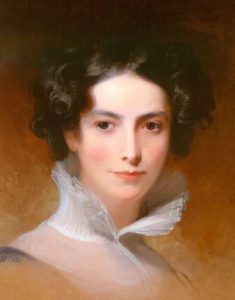The Woman Behind Hebrew School

An 1831 Portrait of Rebecca Gratz by Thomas Sully
Rebecca Gratz (1781-1869) was born in Philadelphia, the seventh of twelve children in a religious Jewish home. On her mother’s side, she was the granddaughter of Joseph Simon, a wealthy Sephardic Jew who helped finance the American Revolution. Her father was an immigrant from Germany and came from a long line of rabbis. From a young age, Gratz was interested in literature and academia. She read her father’s entire library, and wrote articles and poetry of her own. At 19, she became a nurse in order to take care of her ailing father. Gratz soon recognized the countless women and children disadvantaged by the American Revolution, and established the Female Association for the Relief of Women and Children in Reduced Circumstances to help them. In 1815, she co-founded the Philadelphia Orphan Asylum and would go on to lead the organization for over 40 years, providing a safe home for hundreds of children. (She similarly helped open orphanages in Lexington, Richmond, and New York.) At the same time, Gratz was very active in her local synagogue, Philadelphia’s Mikveh Israel. Hoping to reverse the assimilation of Jews in America, and to provide free education for the poor, she opened up the world’s first Hebrew Sunday School in 1838 with 60 students. It would go on to have 4000 graduates. Gratz served as teacher, curriculum developer, superintendent, and president for nearly 30 years. She helped open new branches in Charleston, Baltimore, and other cities, while founding a teacher’s college to train new educators – all Jewish women. Gratz also co-founded the Female Hebrew Benevolent Society, and the Hebrew Education Society of Philadelphia (alongside former Jew of the Week Isaac Leeser). Her advocacy paved the way for the first Jewish foster home in the New World, which opened in 1855. Gratz was also a prominent defender of traditional Judaism. She fought back against proselytizing Christians, and vehemently opposed the new Reform Jewish movement. She advocated tirelessly for Jews to have equal rights, and inspired American Jews to be proud and open about their faith at a time when non-Christians were still often seen as second-class citizens. Not surprisingly, Gratz was described as “the foremost American Jewess of her day.” At one point, Gratz was called the most beautiful woman in America. Her portrait was painted twice by famous American artist Thomas Sully. Gratz never married; the man she loved was not Jewish, and she refused to marry outside of her faith. When her sister passed away at a young age, she raised her six children. After her own passing, the teacher’s college she co-founded was renamed in her honour, and still runs today as Philadelphia’s popular Gratz College. Rebecca Gratz is the basis for the heroine “Rebecca” in Sir Walter Scott’s classic novel Ivanhoe.
15 Facts About Tzedakah Every Jew Should Know
Words of the Week
A man should eat and drink less than what he can afford, dress in accordance with what he can afford, and honour his wife and children beyond what he can afford.
– Talmud (Chullin 84b)
